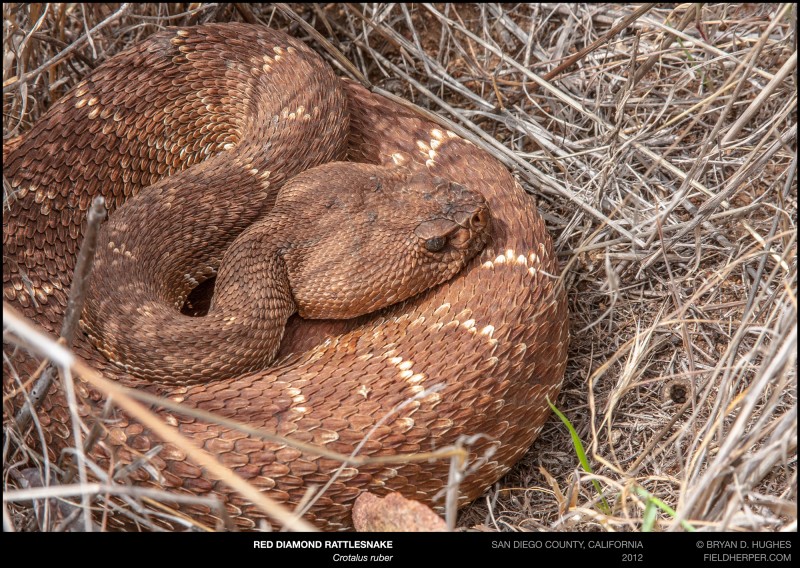On of my favorite ways to find rattlesnakes is to just hike at night, when they are out in the wide open and fairly easy to find. Where 6 or 7 years ago I’d just not do a lot of successful herping in the super hot dry month of June, now it’s perhaps the easiest month to see some animals. As snakes’ activity is minimized to due the extreme heat, they’re drawn to aestivation areas in relatively predictable areas, and are almost stuck there. I have dozens of diamondbacks, for instance, in the Phoenix area that I know exactly where and when to find them at that time – it’s almost disorienting when the rain finally comes and everything moves off again.
Here are just a few of the regulars. I don’t usually photograph them after the first time – so that I don’t disturb them, and simply because I don’t need to. They are sitting more or less in the same exact place each night.
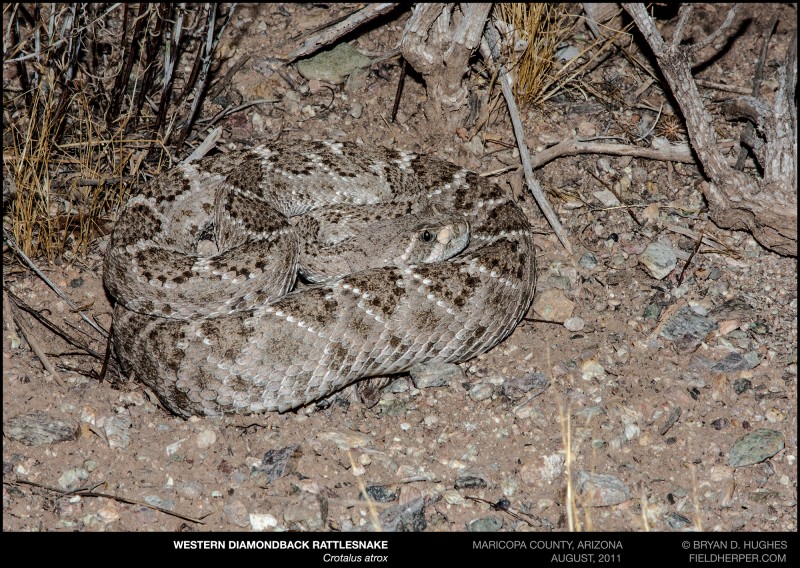
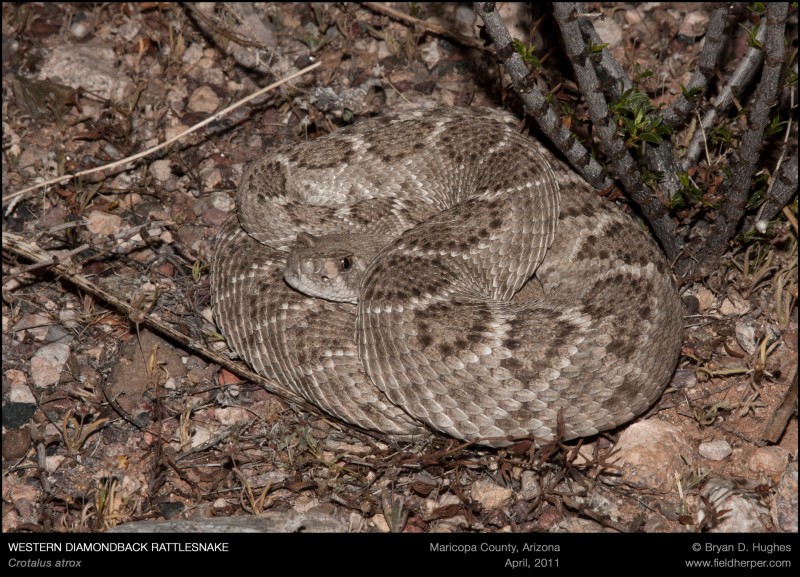
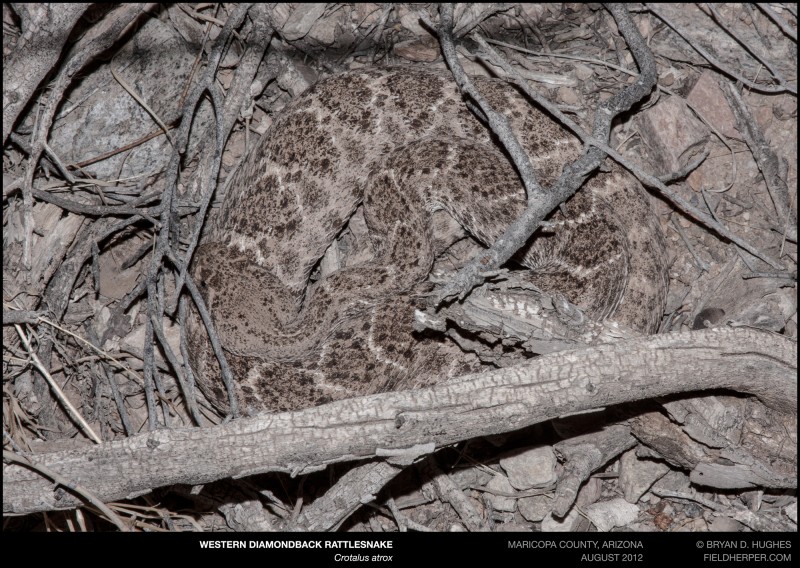
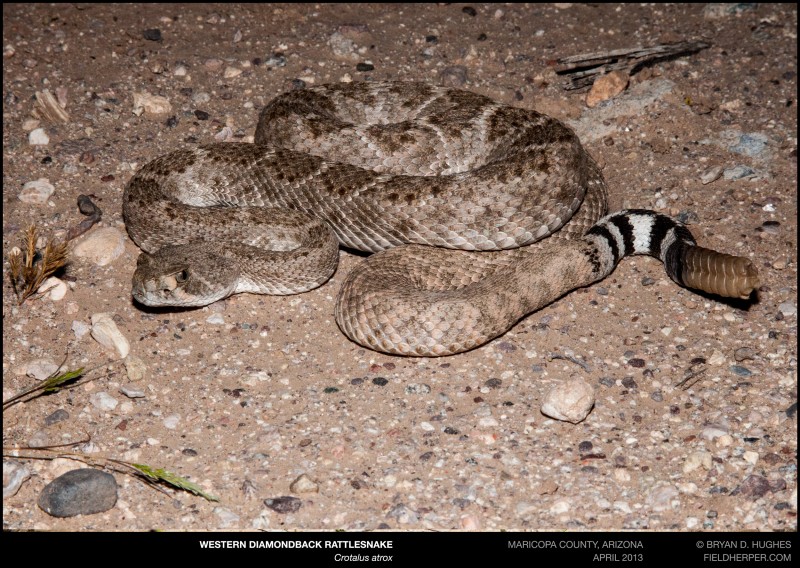
Tags: arizona, Crotalus atrox, hiking, Western Diamondback Rattlesnake
Posted in Behavior, Field Herping, Snakes | No Comments »
While some of the timbers at the dens in Northern Pennsylvania had clearly been up for awhile, others seemed to have just come to the surface. Some, like this one, were still caked in mud and showed signs of being partially submerged for at least part of the winter – which is pretty amazing to think about.
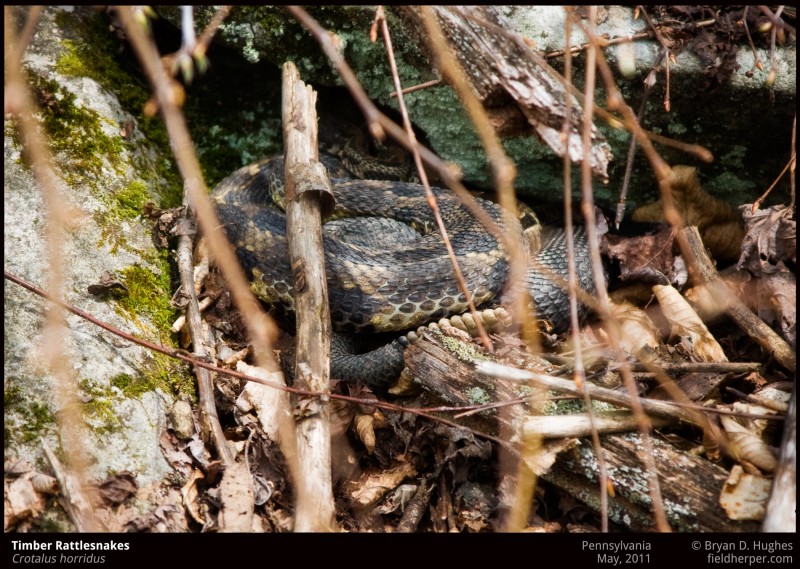
Tags: crotalus horridus, snake den, timber rattlesnake
Posted in Field Herping, Field Trips, Snakes | No Comments »
This was the first large rattlesnake to emerge from this den in North/Central Idaho. This place has to be right at the limit of high elevation and Northern range of these snakes – when I first heard of this location, I was almost skeptical of the identification, thinking that the Northern Pacific rattlesnake would be a more likely bet. I was wrong – we watched 10 Great Basin Rattlesnakes climb out of the rocks over the course of a few hours on a rather chilly, windy day.
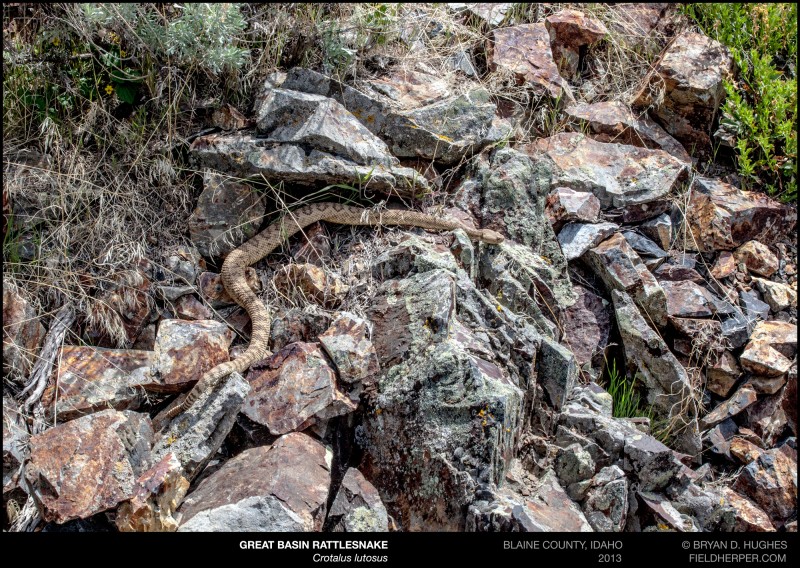
Tags: Crotalus, great basin rattlesnake, lutosus
Posted in Behavior, Field Trips, Snakes | No Comments »
Fortunately, this road is seldom traveled, and this snake will probably not pay the price for its dangerous basking habits.
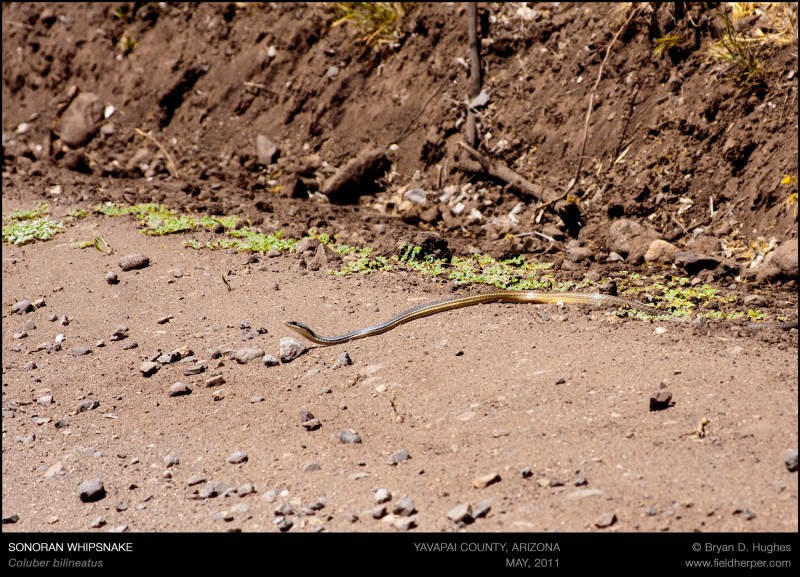
Tags: bilineatus, coluber, whipsnake, Yavapai County
Posted in Snakes | No Comments »
Wow, she looks pretty dramatic here! Anyone that’s tried to photograph anything but the rear 2/3rds of one of these knows how much of a pain this can be, but it can be done. I love whiptails, always busy and almost dismissive of the big primates walking around in their home.
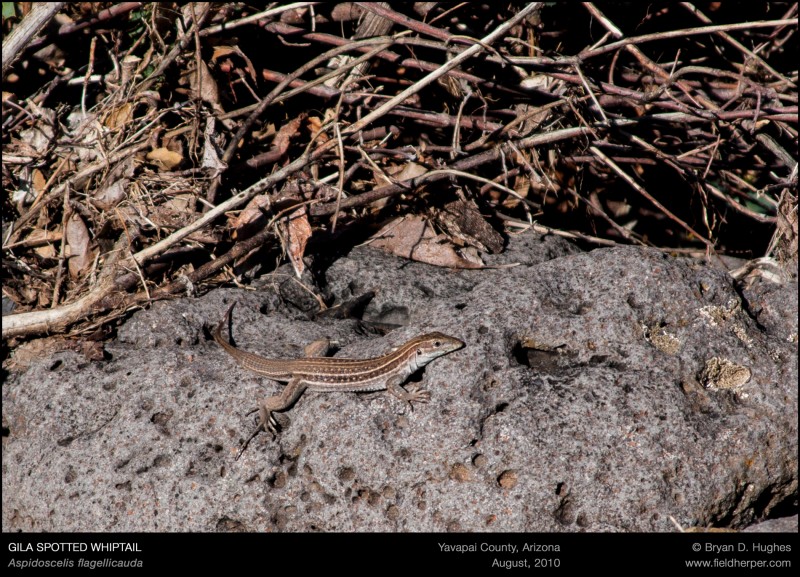
Tags: aspidoscelis, flagellicauda, gila spotted whiptail, lizard
Posted in Lizards | No Comments »
This is a spot to go see banded rocks at such regularity that it’s an absolute disappointment to find fewer than 2 in the 20 minutes or so it takes to hunt the place. Most of the individuals here – I’ve seen a few times, and know where they’ll be. This female has been hanging around these rocks for years, and is easy to spot hunting Yarrow’s spiny lizards in the morning. I didn’t get any closer than this and risk disturbing her hunt.
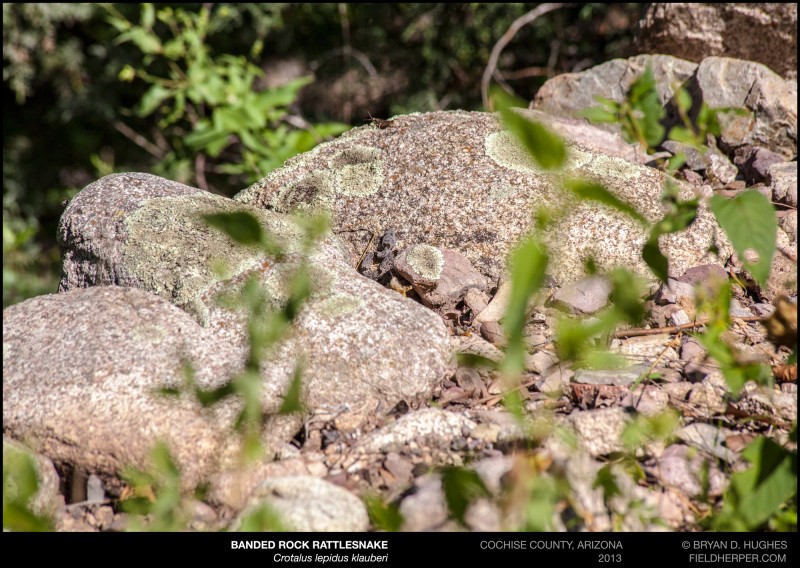
Tags: banded rock rattlesnake, Crotalus, klauberi, lepidus
Posted in Behavior, Field Herping, Snakes | No Comments »
Some of the speckleds from the central Phoenix parks show some amazing variation in pattern, even from one side of the mountain to the other. I’ve noticed that speckleds in the Phoenix mountain preserve have more of a purple base hue than those that are found on the North side. I thought that’s pretty cool, until I started seeing the same trend on Mummy Mountain. It’s more impressive in that situation, because Mummy Mountain is a little strip of mountain that’s only a few hundred yards across … specks on the North side are more pink, while those on the South side are darker with purple base colors. That’s a level of specialization that makes me freak out a little inside. If I were to take a guess, I’d assume that the slight variation of sun exposure on the South side creates a different level of shadow, contrast, dependent lichens and erosion, therefore a slightly different color does the trick.
Here’s a video of one being released after capture in a yard below the mountain. It’s an older female, and I assume displaced. In these inner city areas where specks are found, they seldom wanter out into the neighborhoods unless something’s happened to their primary home.
Tags: Crotalus, mitchellii, phoenix, pyrrhus, removal, snake, speckled rattlesnake
Posted in Behavior, Relocation & Rescue, Snakes | No Comments »
This shot shows the glossy snake’s tool of a nose. Mouth interlocked into the top jaw, ridged, and enlarged labial scales, this is a snake made to dig around in sandy soil looking for prey. This one was particularly fat.
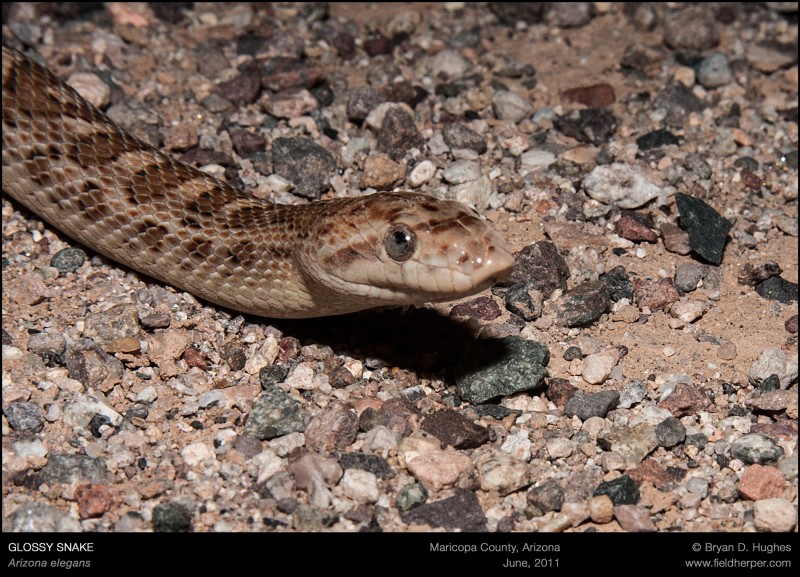
Tags: arizona, elegans, glossy snake
Posted in Snakes | No Comments »
Timber rattlesnakes are sometimes called ‘velvet tailed rattlesnakes’ by locals throughout their huge range. This one fits that description – perfectly polished scales with just a dusting of leaf dirt. It’s a shame I like having all of these fingers, because this one was hard not to touch.
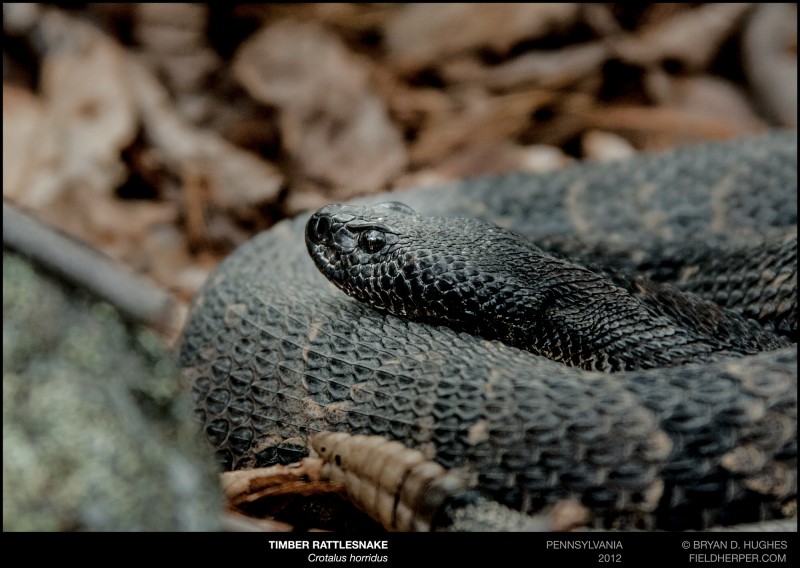
Tags: Crotalus, horridus, pennsylvania, timber rattlesnake, velvet
Posted in Snakes | No Comments »
This is the first blacktail I found at one of my favorite spots in Yavapai county – a place that I didn’t even visit in 2013. This young molossus hiding under a rock was a bit difficult to photograph, but it was done.
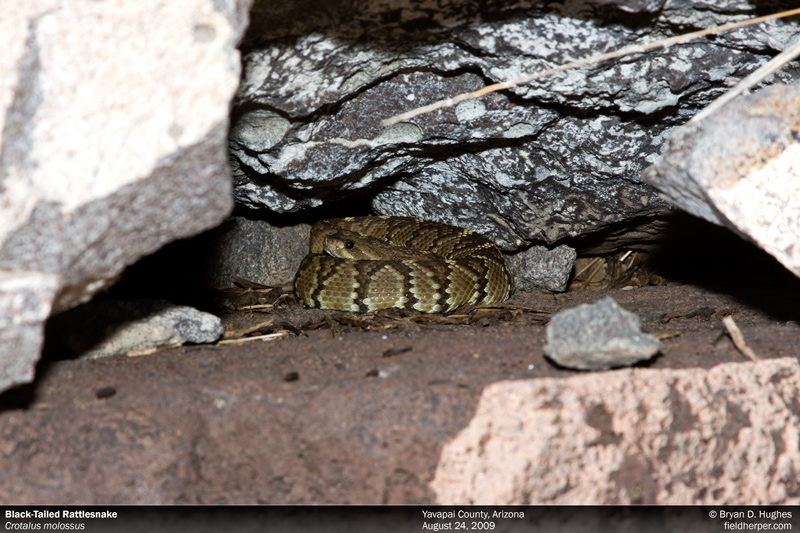
There’s a big female in the area that I have seen a lot. I wonder if she’s mom? She has a route that she takes every morning in August, moving between the bushes coming from wherever she was all night. It’s become so regular that one morning, rather than go looking for her, I just sat on a rock and waited for her to come along. She did of course.
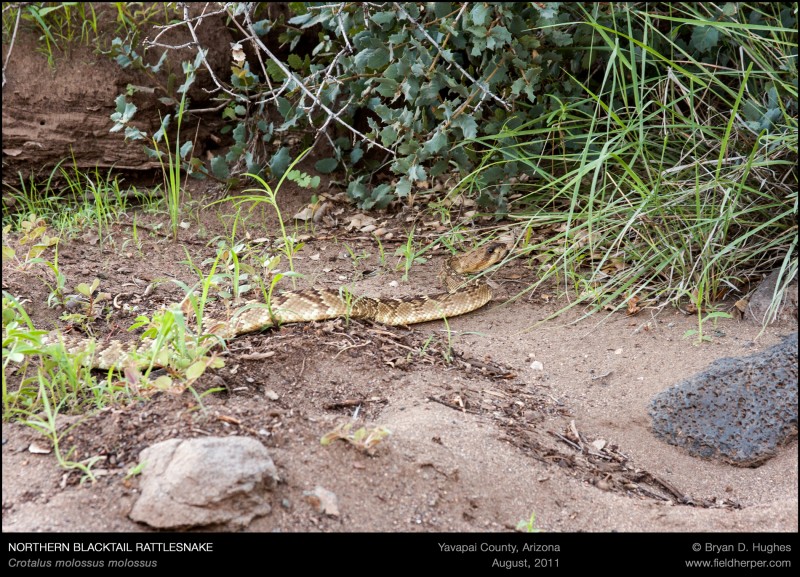
Tags: Blacktail, Crotalus molossus
Posted in Field Herping, Field Trips, Snakes | No Comments »
Night time photography of road cruised diamondbacks is getting difficult to make interesting. I am always happy to see them of course, but how many hundreds of photos do I really need of diamondbacks sitting in roadside gravel in semi-defensive postures? The answer is, probably hundreds more. This one was at least a little interesting in that the headlights of my vehicle combined with the shallow depth of field kept the natural color of the animal much better than the usual flash trash. Maybe there’s something to this?
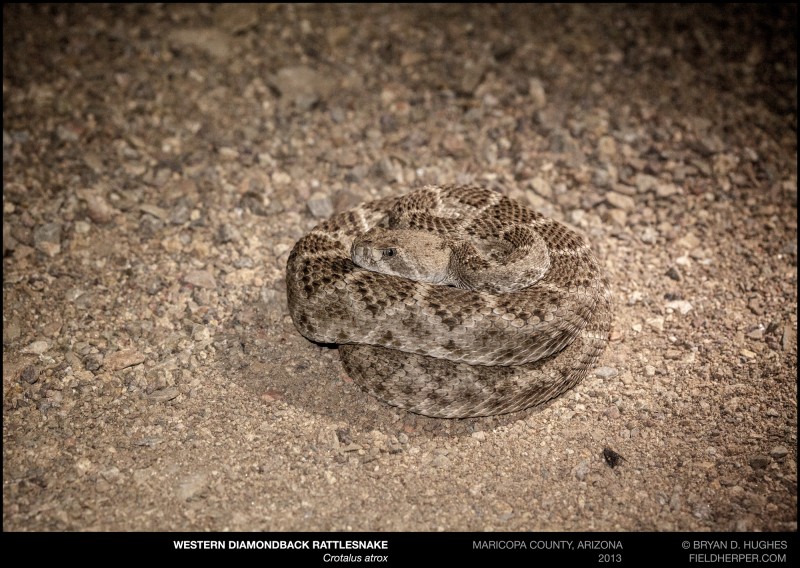
Tags: arizona, atrox, Crotalus, Photography, Western Diamondback Rattlesnake
Posted in Field Herping, Photography, Snakes | No Comments »











